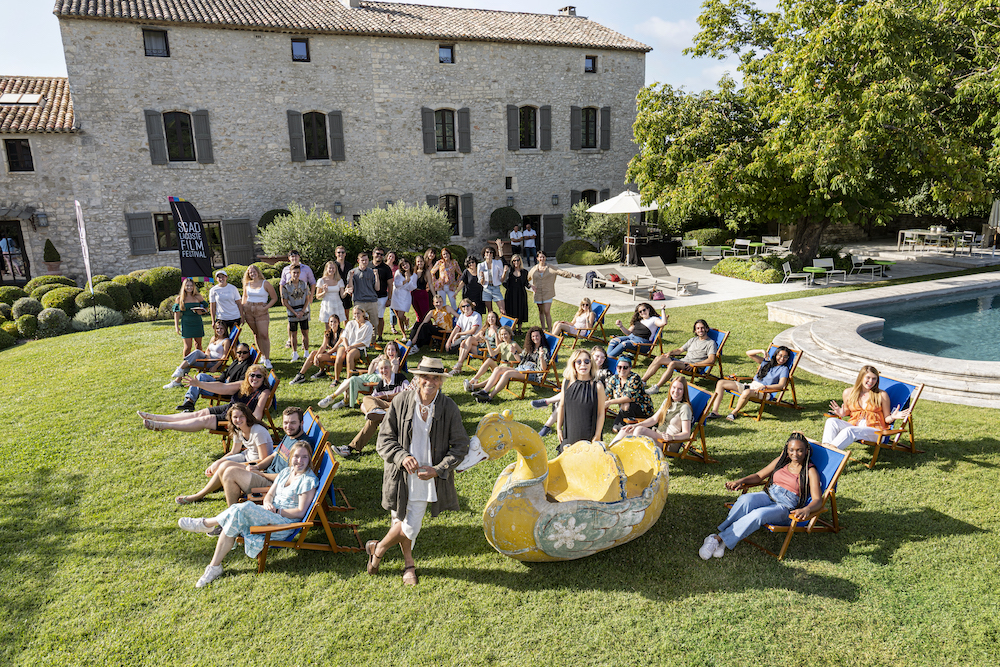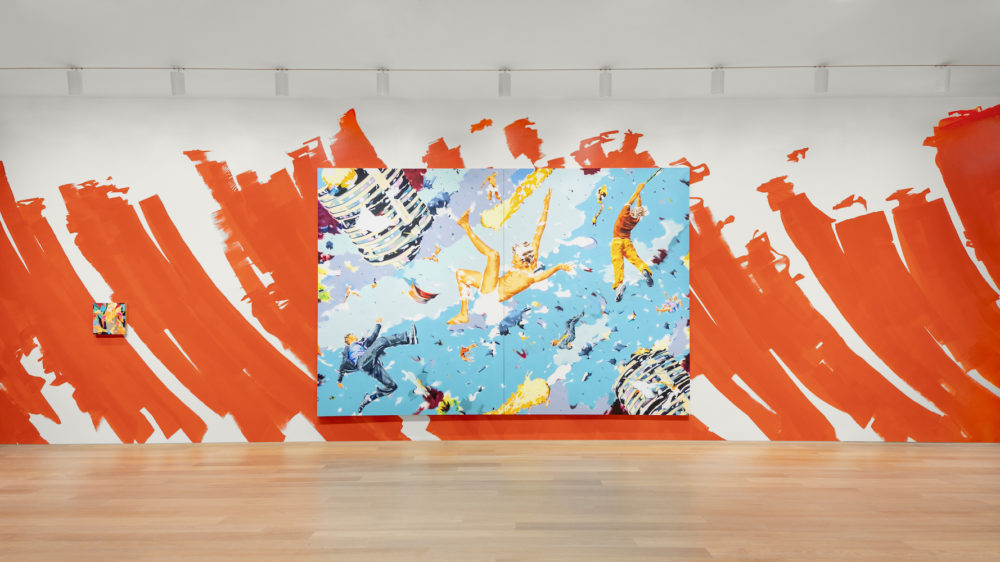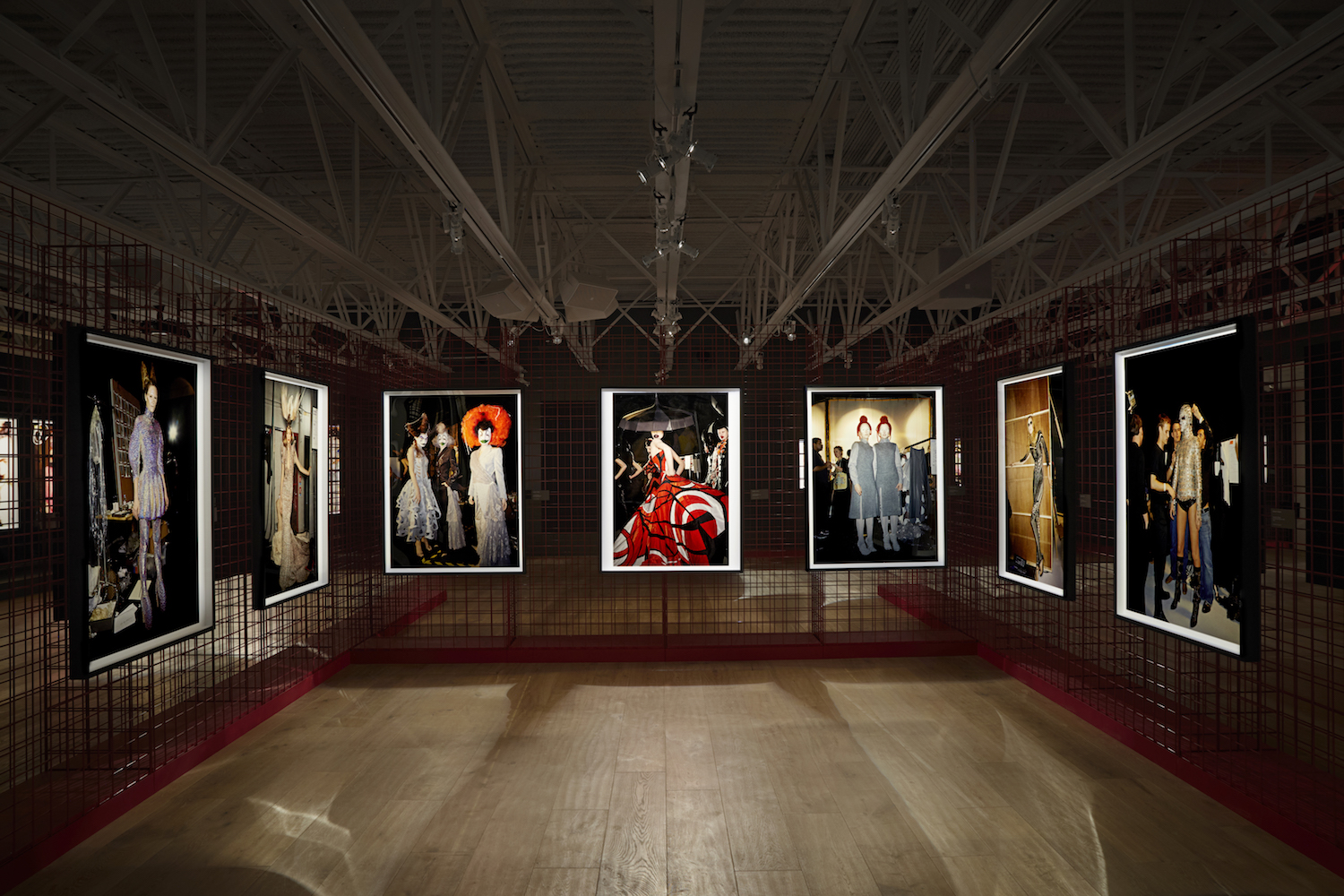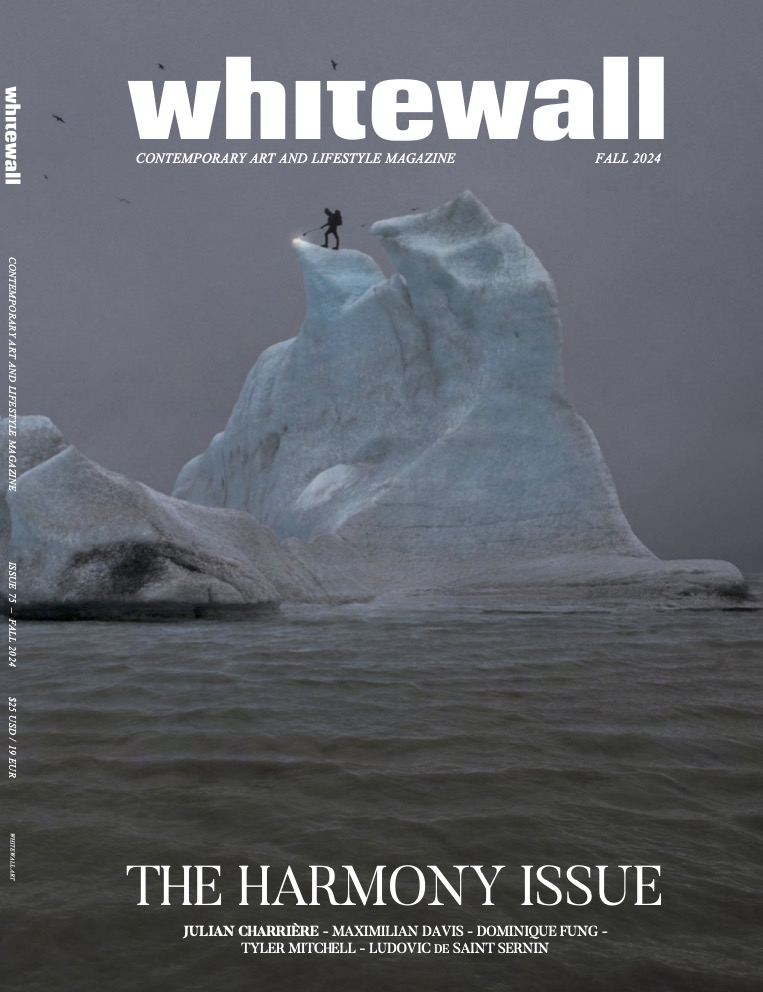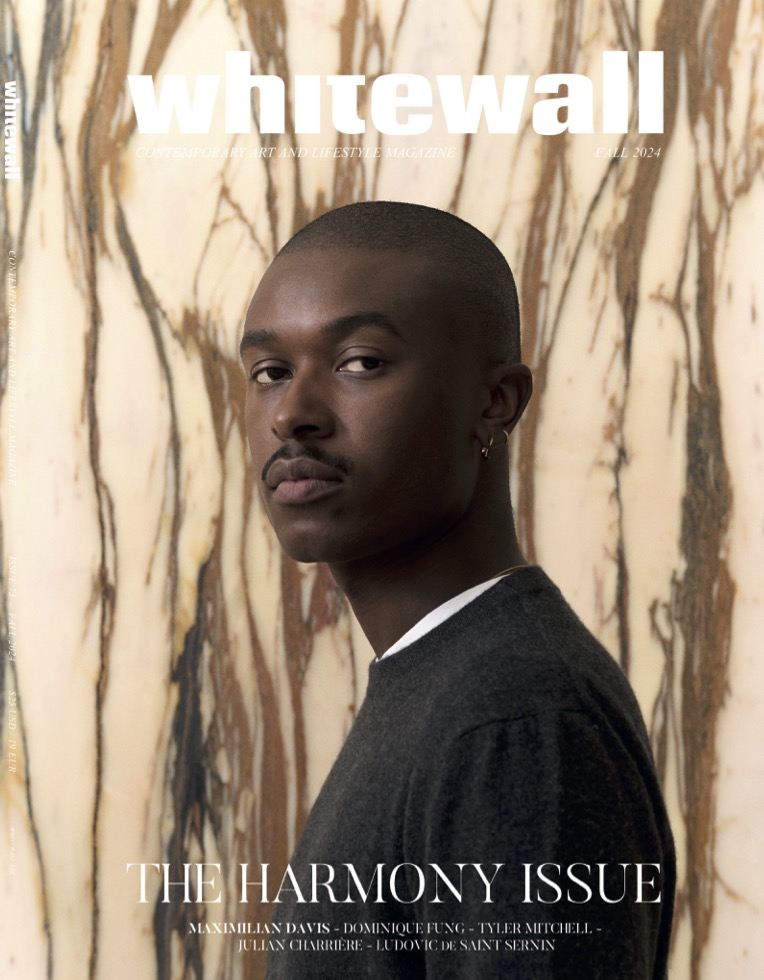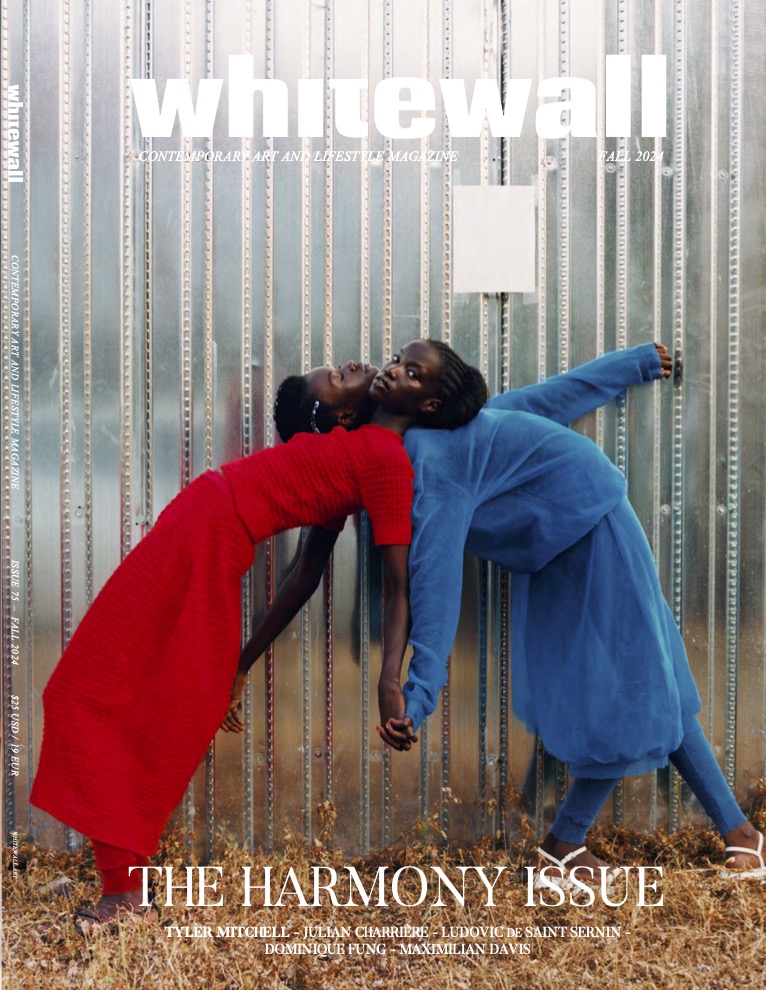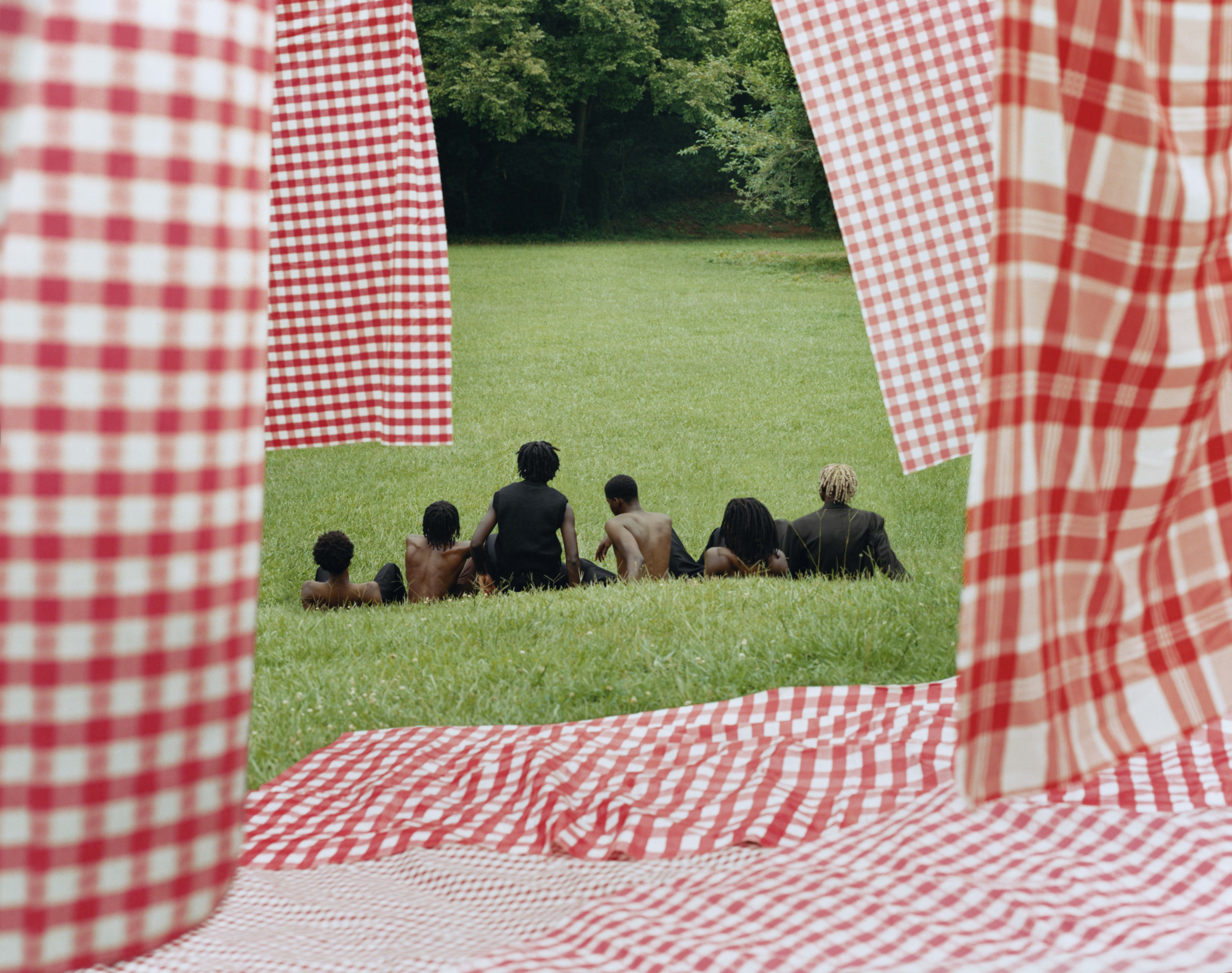In resplendent Provence, nestled in the luminous hillside of the Luberon valley, lies a small medieval town once home to the revolutionary Marquis de Sade. Bathed in sunlight, the pastoral setting can be found across an array of varied canvases, mutating through the renowned brushstrokes of Claude Monet, Henri Matisse, Paul Cezanne, Pablo Picasso, and Vincent Van Gogh. Harbor to the Savannah College of Art and Design (SCAD)’s flagship European residential study abroad program in Lacoste, France, this summer, the university celebrates its 20th year in the region, cultivating creativity and innovation among the myriad of historically preserved centuries-old structures that make up their unforgettable campus.
A globally recognized leader in preservation and adaptive reuse, SCAD has been heralded for its exquisite conservation of the village’s archaeological structure, preserving historically significant sites as they transformed former dwellings and medieval caves into cutting-edge contemporary instructional and exhibition spaces for the benefit of students, faculty, and both Lacoste’s visitors and locals alike.
Now the premier global destination for art and design education, the placement of SCAD Lacoste comes as a relief to the years of war, plague, and industrialization that debilitated the village’s creative legacy, allowing the extraordinary light and unique aesthetic of Provence to be woven into the works of the next generation of artists, translated in a range of varied classic and contemporary mediums.
 SCAD Lacoste’s “Les Nocturnes,” courtesy of SCAD.
SCAD Lacoste’s “Les Nocturnes,” courtesy of SCAD.
Intertwining disciplines like concepts, the array of top-ranked degree programs—ranging from architecture, art history, and painting, to film, illustration, animation, and fashion—vary each quarter along with their respective faculty, consistently infusing new life and energy in the village with an ever-changing spectrum of creative activity.
Hosting a myriad of well-known artists, designers, and creatives alike, SCAD has welcomed names like Pierre Cardin and John Malkovich. This year to celebrate the milestone anniversary, SCAD Lacoste will bring a year-long program of festivities ranging from the inaugural SCAD Lacoste Film Festival to the dedication of Promenade de Sculptures, the university’s new thematic sculpture garden.
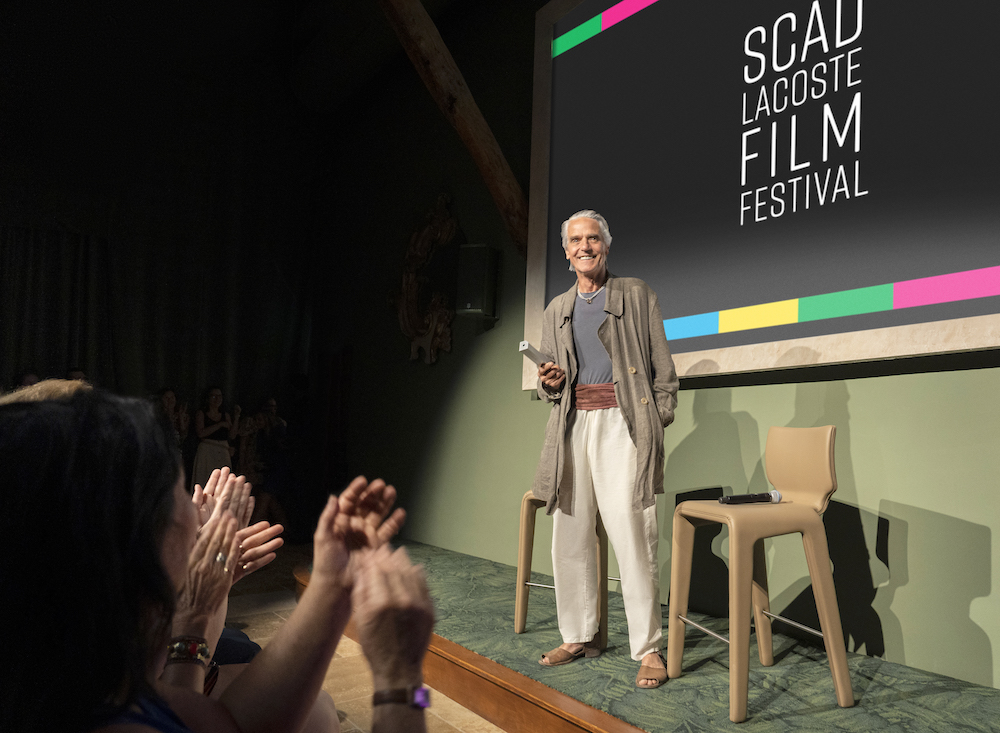 Jeremy Irons receiving SCAD Etoile for Lifetime Achievement in Cinema at SCAD Lacoste Film Festival, courtesy of SCAD.
Jeremy Irons receiving SCAD Etoile for Lifetime Achievement in Cinema at SCAD Lacoste Film Festival, courtesy of SCAD.
Amongst the varied stream of events, SCAD Lacoste presents the current show, “Azzedine Alaïa: L’Art de la Mode,” bringing together a collection of 20 timeless works of fashion by the iconic designer. Showcasing the Tunisian-born designer’s skill in silhouette, cut, and proportion, the exhibition (on display till October 29) was curated by the director of the Fondation Azzedine Alaïa, Olivier Saillard, whom, at the stunning La Residence, Whitewall spoke with about “L’Art de la Mode.”
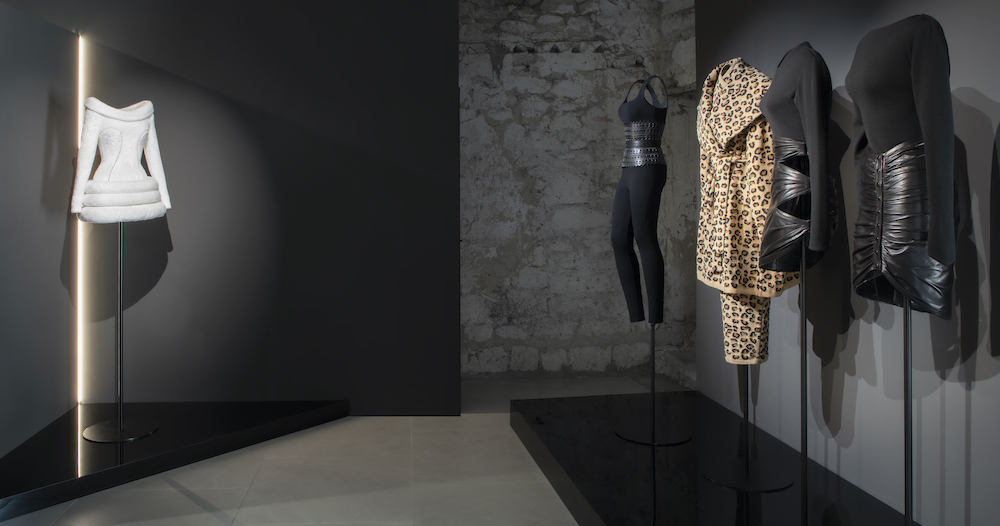 Installation view of “Azzedine Alaia: L’Art de la Mode” at SCAD FASH Lacoste, photo Courtesy of SCAD.
Installation view of “Azzedine Alaia: L’Art de la Mode” at SCAD FASH Lacoste, photo Courtesy of SCAD.
WHITEWALL: Tell us about SCAD Lacoste and Fondation Azzedine Alaïa’s joint exhibition “L’Art de la mode.” How did you rigorously curate the selection of exquisitely tailored creations from the eponymous designer’s archive?
OLIVIER SAILLARD: We first started our collaboration with SCAD FASH two years ago, just before COVID, to prepare an exhibition devoted to Azzedine Alaïa and Gilbert Adrian, the costume designer for Greta Garbo. Azzedine was a fashion designer, as you know, but more than that he was also probably the most important private collector devoted to fashion history. Starting in the ‘60s, he bought a lot of archives from Balenciaga, Charles James, Madelaine Vionnet, Paul Poiret, Schiaparelli, accumulating over 20,000 pieces that, explain the story of fashion.
First, we did this exhibition in Atlanta, and then recently, Rafael Gomes [Director of Fashion Exhibitions, SCAD] asked us to do a very special, more intimate exhibition devoted to Azzedine in Lacoste. This was a very good exercise because it wasn’t easy. It’s much easier to do a big exhibition because you can select a lot of clothes, materials, documents. But to do a small exhibition you have to be very precise; you have to consider visitors who might not know Azzedine Alaia, and have to translate in a few documents—20 dresses—the most important part of him as a designer.
So, that’s what we did.
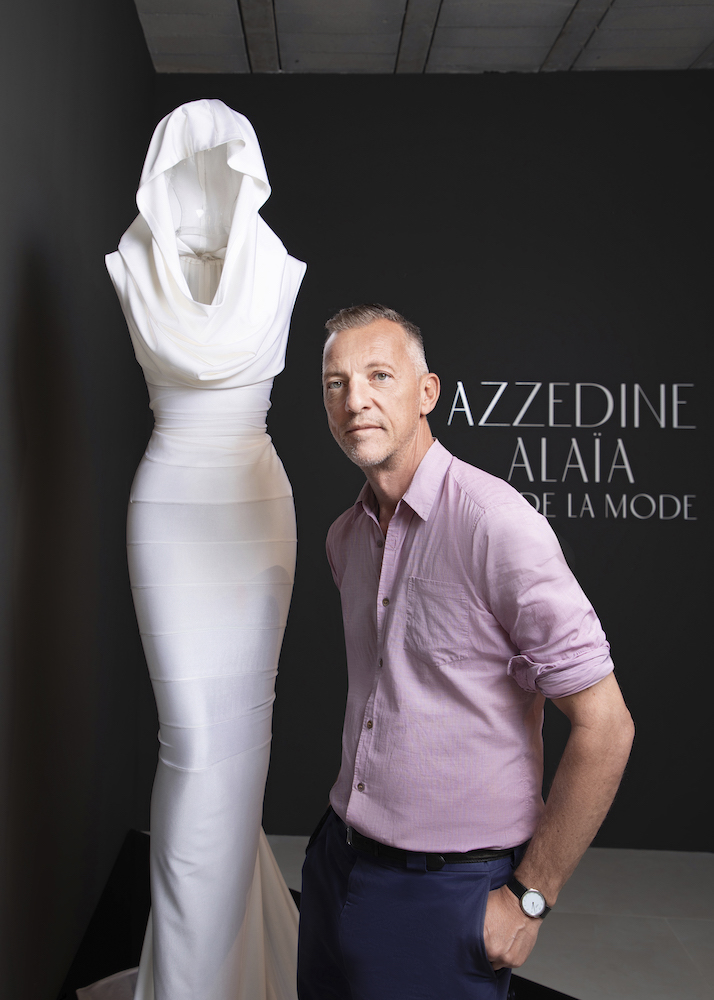 Olivier Saillard in SCAD FASH Lacoste’s “Azzedine Alaia: L’Art de la Mode” exhibition, courtesy of SCAD.
Olivier Saillard in SCAD FASH Lacoste’s “Azzedine Alaia: L’Art de la Mode” exhibition, courtesy of SCAD.
WW: How would you define Azzedine Alaïa’s timeless aesthetic?
OS: Azzedine Alaïa was very opposite to the system, he preferred timeless dresses and was very passionate about technique. I always say that he was the last couturier because he was the only one who knew how to cut, how to stitch. He was not an artistic director that conformed to the title we know today. He was always cutting, stitching, passionate, and concentrated on his technique and from years to decades, would always find his own time to make his dresses.
I will always remember Azzedine saying, “When I have one idea, for a year I’m trying to catch up and work with this idea.” He was quite opposite to the fashion designers we know today. He was passionate about the timelessness of his work. I remember Azzedine telling me how sometimes it would take 10 years for him to do a jacket, a coat, and it’s probably more difficult to repeat the same jacket than to change the jacket every season, but that’s what he did.
He was also passionate about doing clothes in black because when he was young, he wanted to be a sculptor in Tunis, first starting his career as a student in sculpture. As he found he had facilities in stitching and cutting, he became a fashion designer, but he never forgot the art of sculpture.”
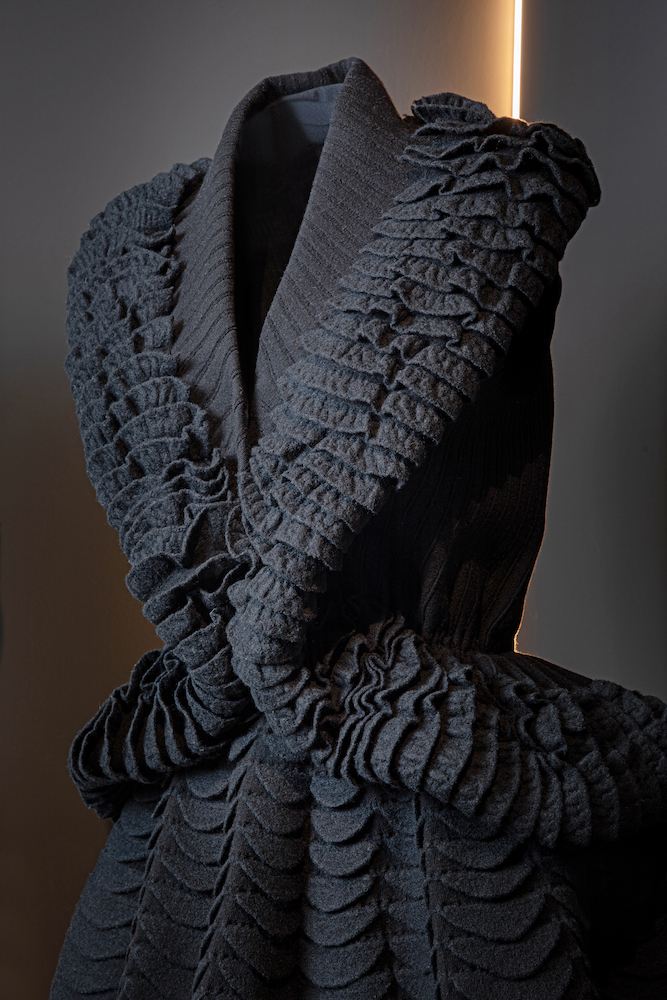 Installation view of “Azzedine Alaia: L’Art de la Mode” at SCAD FASH Lacoste, photo Courtesy of SCAD.
Installation view of “Azzedine Alaia: L’Art de la Mode” at SCAD FASH Lacoste, photo Courtesy of SCAD.
WW: Inherently creative from a young age, Azzedine Alaïa trained as a sculptor at the École des Beaux-Arts before entering the world of fashion, honing his craft in the haute couture of Christian Dior, Guy Laroche, and Thierry Mugler. How would you say this cross-over contributed to his legendary career as the one true couturier of the female form?
OS: I think he was very different from other designers like Christian Lacroix, Jean-Paul Gaultier, or Karl Lagerfeld. He joined Paris in the middle of the ‘50s and for 20 years was couturier for a very private clientele—very notorious, very anonymous, but always very private. Then, late in the ‘70s, Thierry Mugler asked Azzedine to do a smoking tuxedo and suggested that Azzedine start his own collection.
That’s how he started his career, late in the ‘70s. But he was never conformable with this idea of changing fashion every season. For example, he never presented his own collection during fashion week. He would wait a long time, and sometimes take the decision not to present anything if he was not ready. He also refused to dress certain people, refused to present certain collections. In the end, he found his own time. And I really believe that other artists appreciate that, his sense of time not as fashion but as the real artist.
And when he was creating clothes, the first inspiration he had was always the body of the woman. He never started a collection without a woman close to him. He would always start by cutting, stitching, directly on the body, the attitude of a sculptor.
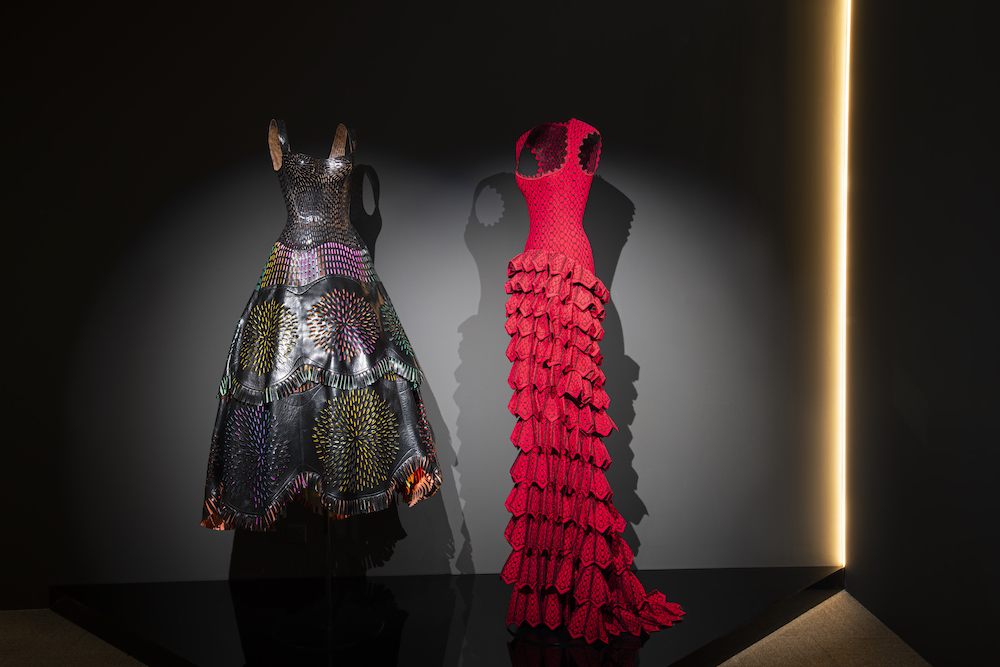
“”
WW: Why do you think SCAD specifically selected Azzedine Alaïa—heralding him as a hero and example for aspiring students?
OS: I’m always telling students, whether fashion design students or students from other disciplines, that when you study fashion, it’s very important that you forget the name of fashion. You have to consider the clothes because fashion, in itself, it’s everywhere. It doesn’t mean anything.
For me, the solution is to look at the authors. Like in literature, I see the authors and then I do a selection. If you are selecting authors, you can select Balenciaga, Vionnet, Madame Grès, Alaïa, Comme des Garçons, Yohji Yamamoto…whether in literature, contemporary art, or fashion, I’m only interested in the authors.
And Azzedine Alaïa was probably one of the most independent authors, because he refused everything. Sometimes, very famous fashion houses would propose to him to collaborate and he would always say “no.” He would say “no” because he had the conscience that he was unique, the only one and probably the last one to “do” clothes—to know how to stitch, how to cut.
It’s a good message to offer new students, that you can be a fashion designer selecting a certain image but if you know technique – how to cut, how to stitch, it’s infinitely better.
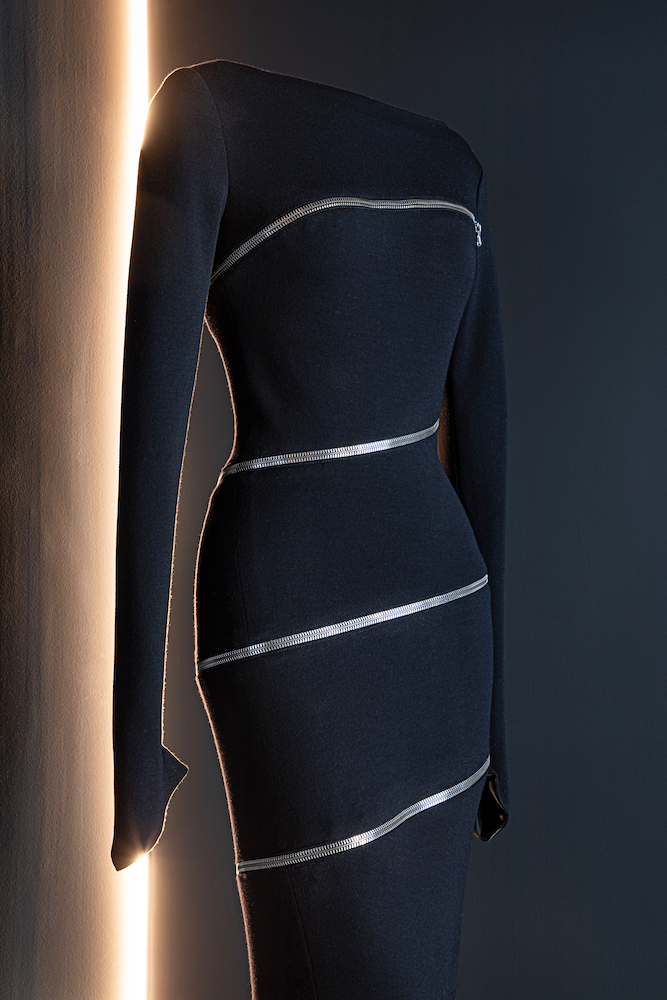 Installation view of “Azzedine Alaia: L’Art de la Mode” at SCAD FASH Lacoste, photo Courtesy of SCAD.
Installation view of “Azzedine Alaia: L’Art de la Mode” at SCAD FASH Lacoste, photo Courtesy of SCAD.
WW: Azzedine Alaïa was esteemed as a virtuoso of cut and proportion unrivaled in accentuating the female form, inciting such awe within the fashion world he became an undisputed icon. If he were alive today, what do you think would be his advice to SCAD students with fashion aspirations of their own?
OS: To learn technique, probably, and to find their own time. To refuse the system first, then find their own time, and learn technique, always, always, always. Which is the difference between fast fashion and doing a work of art.
WW: For students coming from the US to spend eight weeks in France at the SCAD Lacoste campu, what is it about Azzedine Alaïa’s iconic style—out of all perspectives of French designers alive and dead—that sets him apart as a figure the students could learn from?
OS: The first thing which is a big difference is that Azzedine Alaïa is completely timeless. If you see a collection from the ‘80s, the ‘90s, or after the 2000s, it’s always completely timeless, you can never really tell when he did it. He is probably the most independent example in fashion.
Many students want to apply for a job with one of the big industry names, Azzedine was absolutely not interested in any of that. I would love to see, through his example, these students re-evaluate and do something under their name.
Azzedine was completely comfortable with this idea, he didn’t want to sell a lot, he could not. He thought he could write a work of art, a life, with a few select pieces, but not necessarily with stores all over the world.”
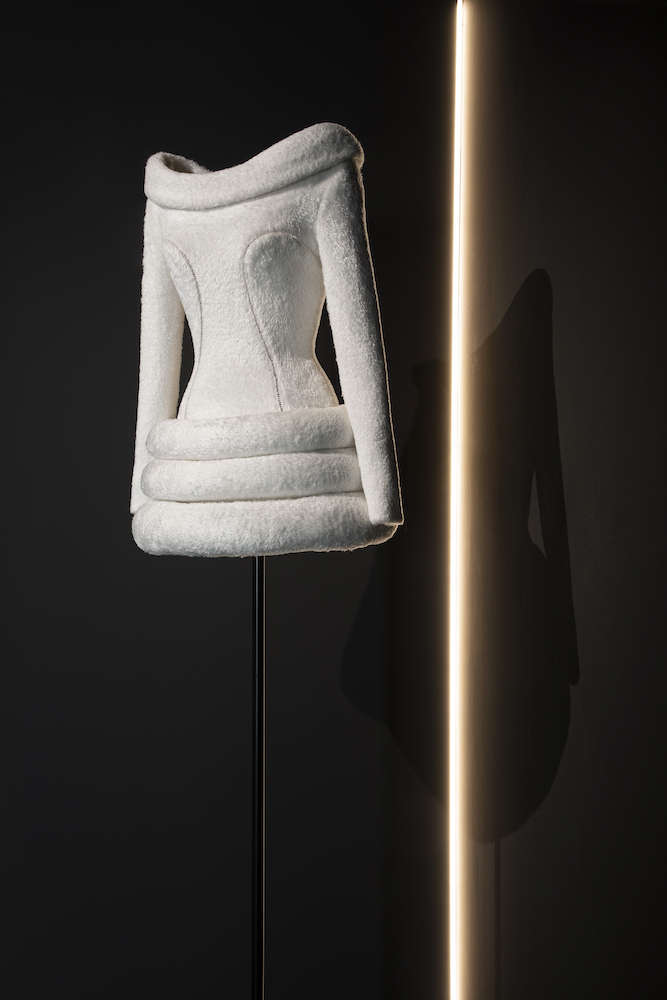 Installation view of “Azzedine Alaia: L’Art de la Mode” at SCAD FASH Lacoste, photo Courtesy of SCAD.
Installation view of “Azzedine Alaia: L’Art de la Mode” at SCAD FASH Lacoste, photo Courtesy of SCAD.
WW: What other elements from his practice—aside from his mastery of couture—can he be revered for as a man in the creative industry?
OS: I remember asking Azzedine, “What is the best compliment we could say to you?” and he always said, “I think it is quite insulting to say to a woman, you have a nice dress. You have to say, you look very nice, your face is very harmonious.”
Azzedine used to consider his work, his clothes, to have to be completely anonymous in order to be a pedestal for the face. I like this idea. It’s a union. And in the end, Azzedine spent all his life doing clothes very well, the jackets, the coats, the dresses but they never took the role before the woman. It was always inspired by women, by every kind of woman, helping them to be themselves whether they be small, tall, thin, curvy.
WW: A globally recognized leader in preservation and adaptative re-use, historic conservation forms a SCAD hallmark, extending outside the curriculum to the very buildings that serve as a breeding ground for the student’s education. As a fashion historian yourself, serving as custodian to Azzedine’s Alaïa legacy of iconic designs – where would say lies the value of historic preservation and retrospective in both creative design and education?
OS: When I met Martin Margiela, Yohji Yamamoto, they knew completely the history of costumes. Even when you look at Vivienne Westwood who was the most important punk fashion designer, she was the best at explaining the fashion of the 18th century. It’s absolutely, bizarre but, even Martin Margiela, I remember welcoming him for an exposition, and he only wanted to see clothes from the 19th century. It’s very far from his story, but then I never saw an important designer who wasn’t interested in the history of costumes.
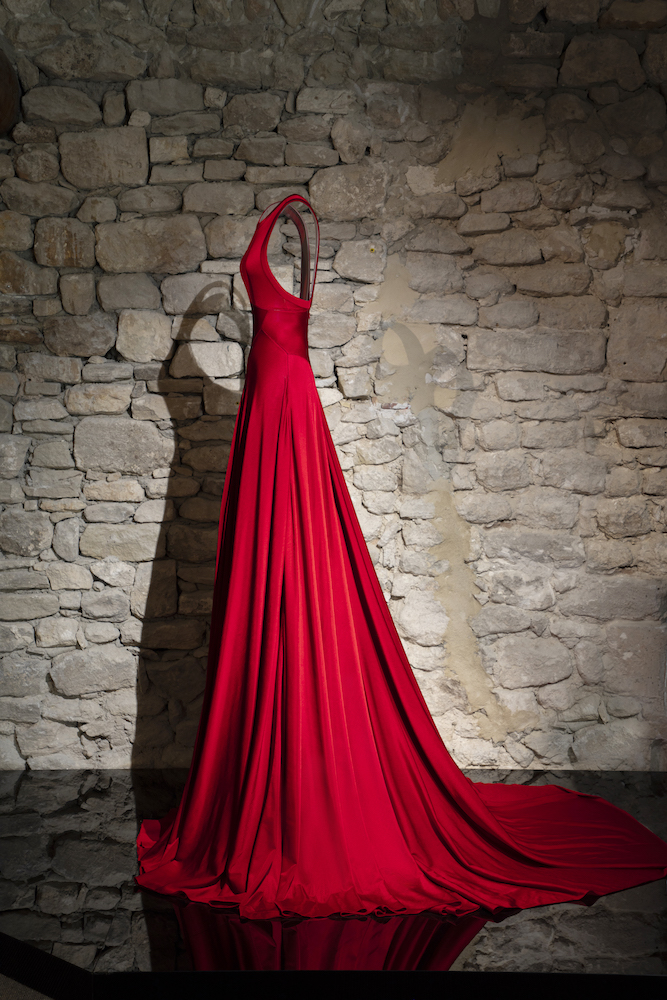 Installation view of “Azzedine Alaia: L’Art de la Mode” at SCAD FASH Lacoste, photo Courtesy of SCAD.
Installation view of “Azzedine Alaia: L’Art de la Mode” at SCAD FASH Lacoste, photo Courtesy of SCAD.
WW: SCAD FASH focuses on the future of fashion design, connecting conceptual and historical principles of dress into one. How do you believe Azzedine Alaïa’s iconic designs can serve as a lesson to the next generation of design?
OS: I’m waiting for a generation who proposed to me one dress every season. I think it could be more intellectual, conceptual. We had a talk with students this afternoon and I said to them: “You have to become punk again.”






